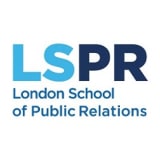This informal CPD article, ‘How Artificial Intelligence Drives Innovation in Public Release Writing and Media Relations’, was provided by the London School of Public Relations (LSPR), a training and business development organisation that offers support to numerous multinationals, SMEs and NGOs in the UK and globally.
Artificial intelligence is revolutionizing press release writing and media relations in groundbreaking ways. From automated drafting to optimized distribution and enhanced analytics, AI tools are transforming core public relations workflows. These technologies enable greater efficiency and precision, but also pose risks if applied without human oversight. This article explores how brands can leverage AI to connect with audiences and press in more meaningful ways, while underscoring why strategic human creativity remains vital.
Harnessing AI to Enhance Press Release Discoverability and Visibility
AI offers public relations writing the combined power of human creativity and machine computation to advance press release discoverability and reach. Artificial intelligence presents promising opportunities to optimize press releases for improved search engine visibility and discovery by media professionals and other target audiences. AI analytic tools can evaluate elements such as keyword usage, headlines, formatting, and structure to generate releases engineered for maximum findability.
Emerging AI may even have the capability to dynamically construct press release content and layouts tailored to specific reader groups, moving beyond the conventional subtitles, quotes, and different sections. However, the clarity and focus provided by time-tested press release formatting conventions remain vitally important. PR experts should direct these AI writing assistants, applying your innate communication instincts and narrative experience together with AI's data-driven recommendations.
Optimized AI-assisted press releases can achieve better media pick-up, inbound links, and SEO performance. AI can also smartly match related images and videos to boost engagement.
Freeing PR Experts to Focus on Strategy by Automating Press Release Drafting and Research
On top of optimizing discoverability, artificial intelligence also streamlines more tedious parts of press release creation, including early research and formatting. This liberates public relations specialists to concentrate their talents on vital strategic messaging, brand positioning and nurturing media relationships.
Some advanced AI writing assistants take over initial press release drafting entirely before handing off to PR experts for brand alignment, messaging finesse and finalization. Others rapidly formulate customized drafts with just a few initial keywords. In either case, AI handles the basic assembling of information, statistics, quotes and announcements.
By relieving PR pros of routine writing and research tasks, AI enables greater focus on high-level branding, ideation and relationship building with press contacts. The technology handles the groundwork while specialists provide the finishing touches on positioning, style and tactical communication. Together, AI and humans form an efficient press release creation pipeline.
AI-Powered Media Targeting for More Personalized and Effective Pitches
Artificial intelligence unlocks game-changing data capabilities for media relations, enabling more selective and personalized press release targeting. By rapidly processing massive datasets, AI systems can pinpoint the most relevant journalists, outlets and audiences for any given announcement.
Rather than broadly blasting every release, brands can now use AI-generated insights to craft aligned pitches for particular writers and publications. This analysis also allows further tailoring messaging to resonate with certain reporter beats, interests and previous coverage. Enabled by AI's computational speed at scale, targeting specific media contacts tends to achieve significantly higher engagement over spray and pray techniques. The data also suggests follow-up angles or related announcements to re-engage press contacts through nurtured storytelling.
The end result is more meaningful brand-journalist relationships through AI unlocking an unprecedented degree of media targeting precision and personalization. While reaching wider audiences, announcements also feel more human. It's a winning combination for improved media relations.














